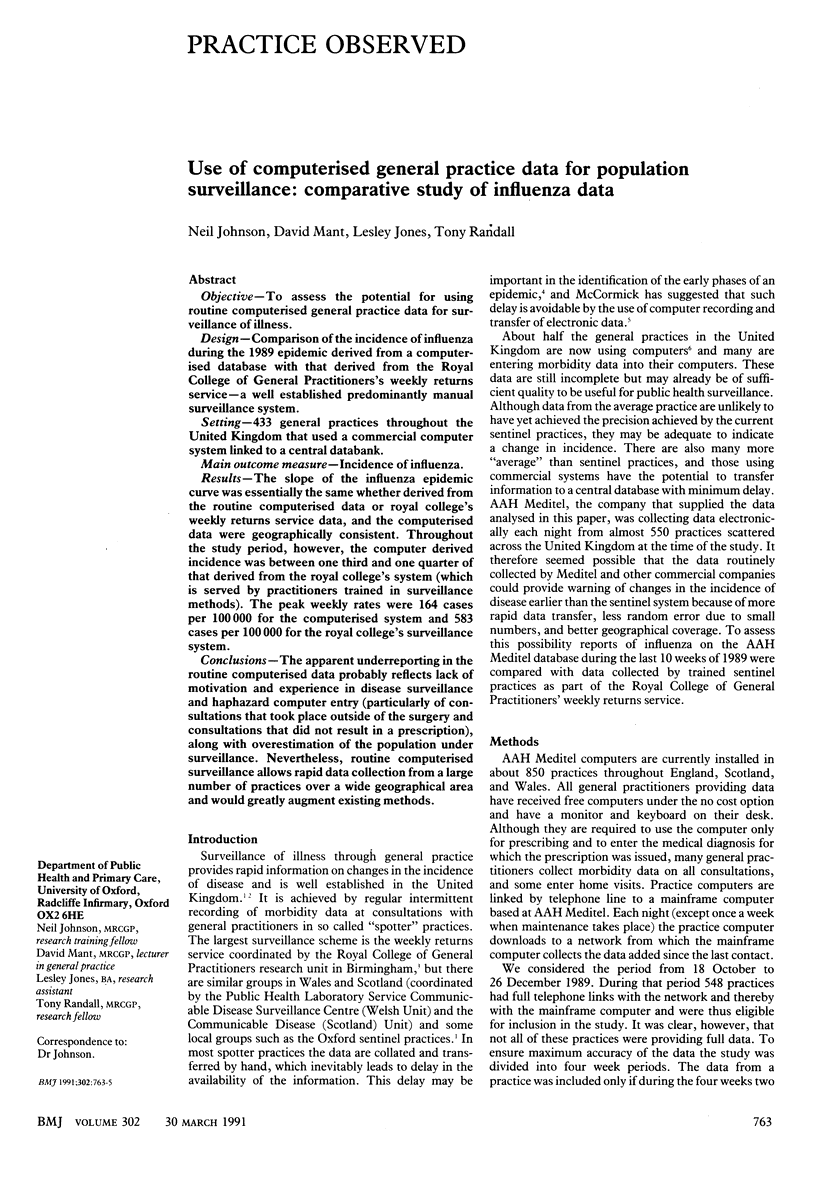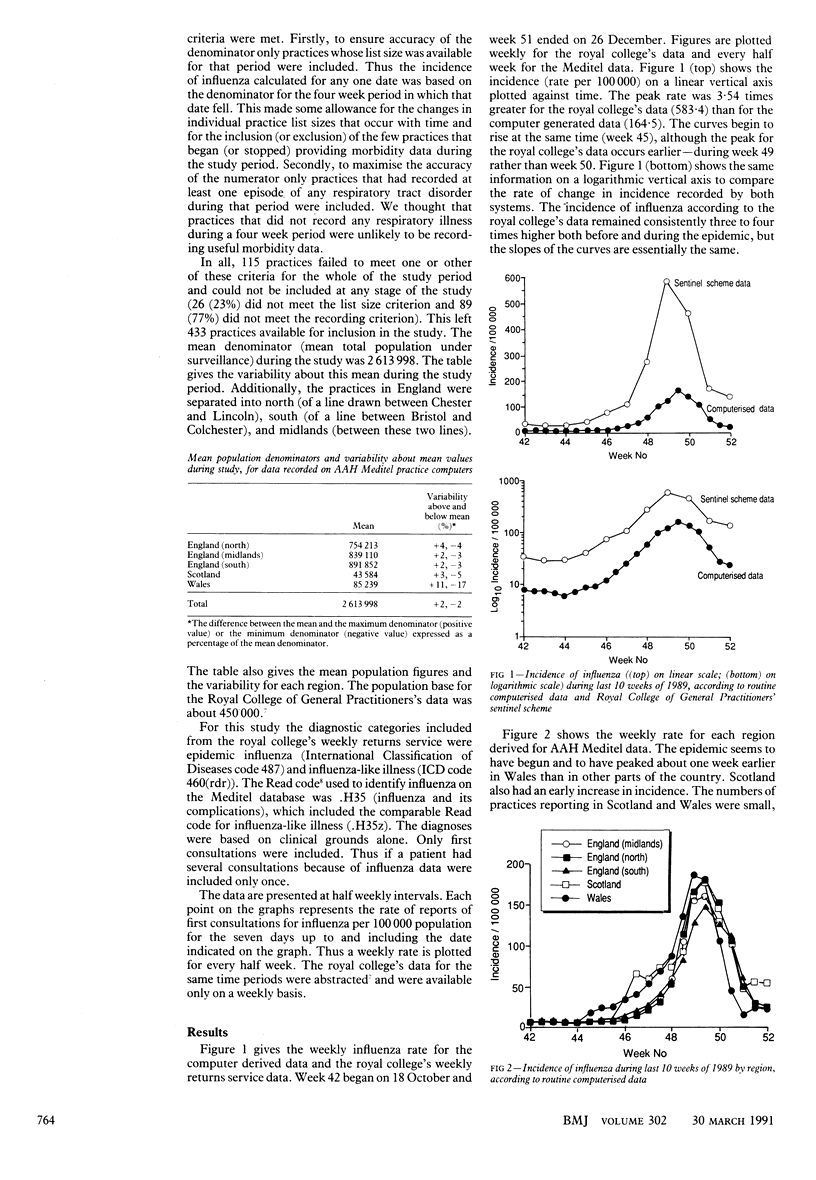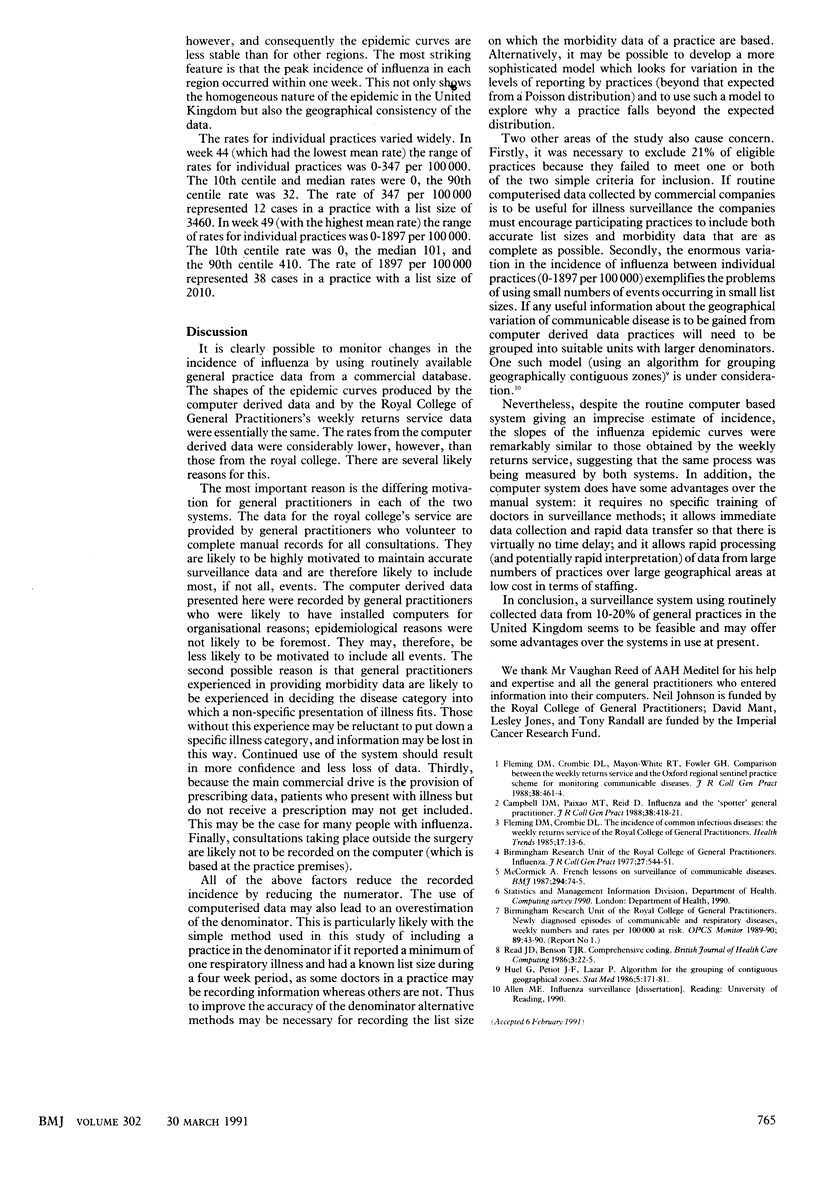Abstract
OBJECTIVE--To assess the potential for using routine computerised general practice data for surveillance of illness. DESIGN--Comparison of the incidence of influenza during the 1989 epidemic derived from a computerised database with that derived from the Royal College of General Practitioners's weekly returns service--a well established predominantly manual surveillance system. SETTING--433 general practices throughout the United Kingdom that used a commercial computer system linked to a central databank. MAIN OUTCOME MEASURE--Incidence of influenza. RESULTS--The slope of the influenza epidemic curve was essentially the same whether derived from the routine computerised data or royal college's weekly returns service data, and the computerised data were geographically consistent. Throughout the study period, however, the computer derived incidence was between one third and one quarter of that derived from the royal college's system (which is served by practitioners trained in surveillance methods). The peak weekly rates were 164 cases per 100,000 for the computerised system and 583 cases per 100,000 for the royal college's surveillance system. CONCLUSIONS--The apparent underreporting in the routine computerised data probably reflects lack of motivation and experience in disease surveillance and haphazard computer entry (particularly of consultations that took place outside of the surgery and consultations that did not result in a prescription), along with overestimation of the population under surveillance. Nevertheless, routine computerised surveillance allows rapid data collection from a large number of practices over a wide geographical area and would greatly augment existing methods.
Full text
PDF


Selected References
These references are in PubMed. This may not be the complete list of references from this article.
- Campbell D. M., Paixao M. T., Reid D. Influenza and the 'spotter' general practitioner. J R Coll Gen Pract. 1988 Sep;38(314):418–421. [PMC free article] [PubMed] [Google Scholar]
- Fleming D. M., Crombie D. L., Mayon-White R. T., Fowler G. H. Comparison between the weekly returns service and the Oxford regional sentinel practice scheme for monitoring communicable diseases. J R Coll Gen Pract. 1988 Oct;38(315):461–464. [PMC free article] [PubMed] [Google Scholar]
- Huel G., Petiot J. F., Lazar P. Algorithm for the grouping of contiguous geographical zones. Stat Med. 1986 Mar-Apr;5(2):171–181. doi: 10.1002/sim.4780050207. [DOI] [PubMed] [Google Scholar]
- McCormick A. French lessons on surveillance of communicable diseases. Br Med J (Clin Res Ed) 1987 Jan 10;294(6564):74–75. doi: 10.1136/bmj.294.6564.74-a. [DOI] [PMC free article] [PubMed] [Google Scholar]


